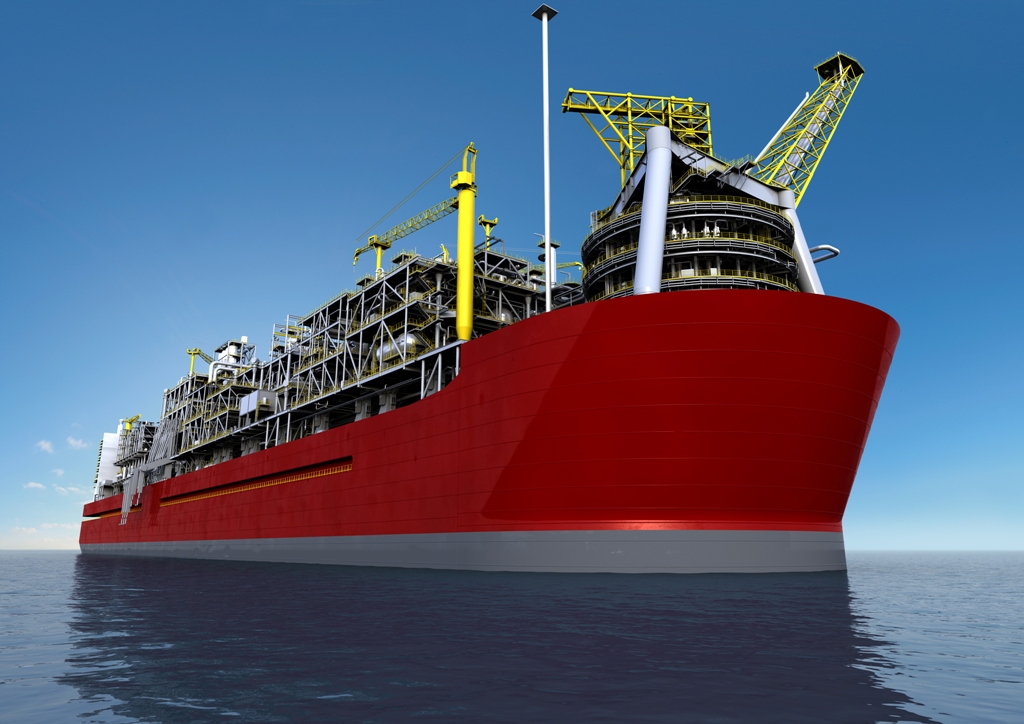April 2014, Vol. 241 No. 4
Features
Shells First FLNG Readied For Western Australian Operations

In December, the 488-meter hull of Shell’s Prelude floating liquefied natural gas (FLNG) facility was floated out of dry dock at the Samsung Heavy Industries (SHI) yard in Geoje, South Korea where the facility is under construction. Shortly after float out the hull was towed to a nearby dock and readied for installation of the massive LNG facilities.
Once completed, the Prelude FLNG facility will produce at least 5.3 million tons per annum (mtpa) of liquids: 3.6 mtpa of LNG – enough to satisfy Hong Kong’s annual natural gas needs – 0.4 mtpa of liquefied petroleum gas and 1.3mtpa of condensate (equivalent to 35,000 bpd).
FLNG will allow Shell to produce natural gas at sea, turn it into LNG and transfer it to ships for transportation to customers. It will enable development of gas resources ranging from clusters of smaller more remote fields to potentially larger fields via multiple facilities where an onshore development is not viable. This can mean faster, cheaper, more flexible development and deployment strategies for resources that were uneconomic or constrained by technical or other risks.
Prelude FLNG is the first deployment of Shell’s FLNG technology and will operate in a remote basin around 475 km northeast of Broome, Western Australia for 25 years. Shell is the operator of Prelude FLNG in joint venture with INPEX (17.5%), KOGAS (10%) and OPIC (5%), working with long-term strategic partners Technip and Samsung Heavy Industries.
FLNG technology is important as it reduces the project costs and environmental footprint of an LNG development since there is no need for long pipelines to shore; compression platforms to push the gas to shore; near-shore works such as dredging and jetty construction; and onshore development such as building roads, laydown areas and accommodation facilities.
For Australia, the Prelude FLNG project will demonstrate a means of developing some of Australia’s “stranded” offshore gas reserves – those considered uneconomic for development via an onshore plant because they are too small or remote. Australia’s Commonwealth Scientific and Industrial Research Organisation (CSIRO), estimates the country has 140 Tcf of stranded gas.
Huge And Compact
Once completed in 2017, the facility will have decks measuring 488 meters by 74 meters, the length of more than four soccer fields. With its cargo tanks full it will weigh roughly six times as much as the largest aircraft carrier. More than 600 people spent over 1.6 million hours working on different design options.
Despite its impressive proportions, the facility is one-fourth the size of an equivalent plant on land. Engineers have designed components that will stack vertically to save space. The operating plant, for example, will be placed above LNG storage tanks.
Cold water from the ocean will be tapped to help cool the gas. This is accomplished through an assembly of eight one-meter-diameter pipes that extend from the facility to about 150 meters below the ocean’s surface. It will deliver around 50,000 m3 of cold seawater each hour to help cool the gas from below the facility, saving deck space.
The facility is designed to remain onsite during all-weather events, having been designed to withstand a category 5 cyclone. Its sheer size will help it withstand very high winds and giant waves. It will be secured in place by one of the largest mooring systems in the world. A 93-meter-high turret will run through the facility. Four groups of mooring lines will anchor it to the seabed.
The system allows the facility to turn slowly in the wind – absorbing the impact of strong weather conditions – while remaining moored over the gas field. This will ultimately save valuable production days that would have been lost disconnecting the facility and moving it off the field.
Three 6,700-horsepower thrusters sit in the rear of the facility. Two will operate at any one time to turn the facility out of the wind and allow LNG carriers to pull safely alongside to load.
The facility’s storage tanks are located below deck. They can store up to 220,000 m3 of LNG, 90,000 m3 of LPG, and 126,000 m3 of condensate. The total storage capacity is equivalent to around 175 Olympic-sized swimming pools.





Comments